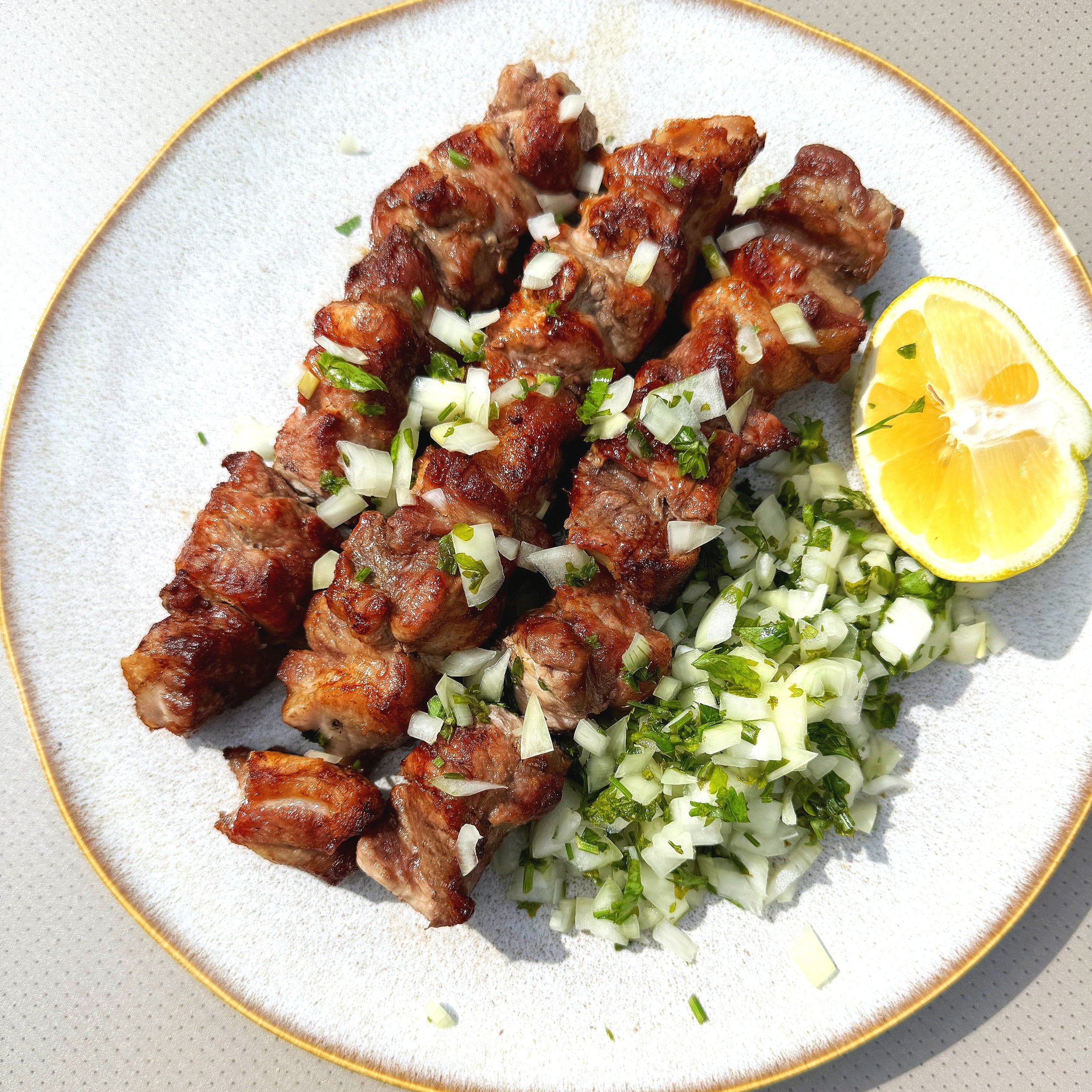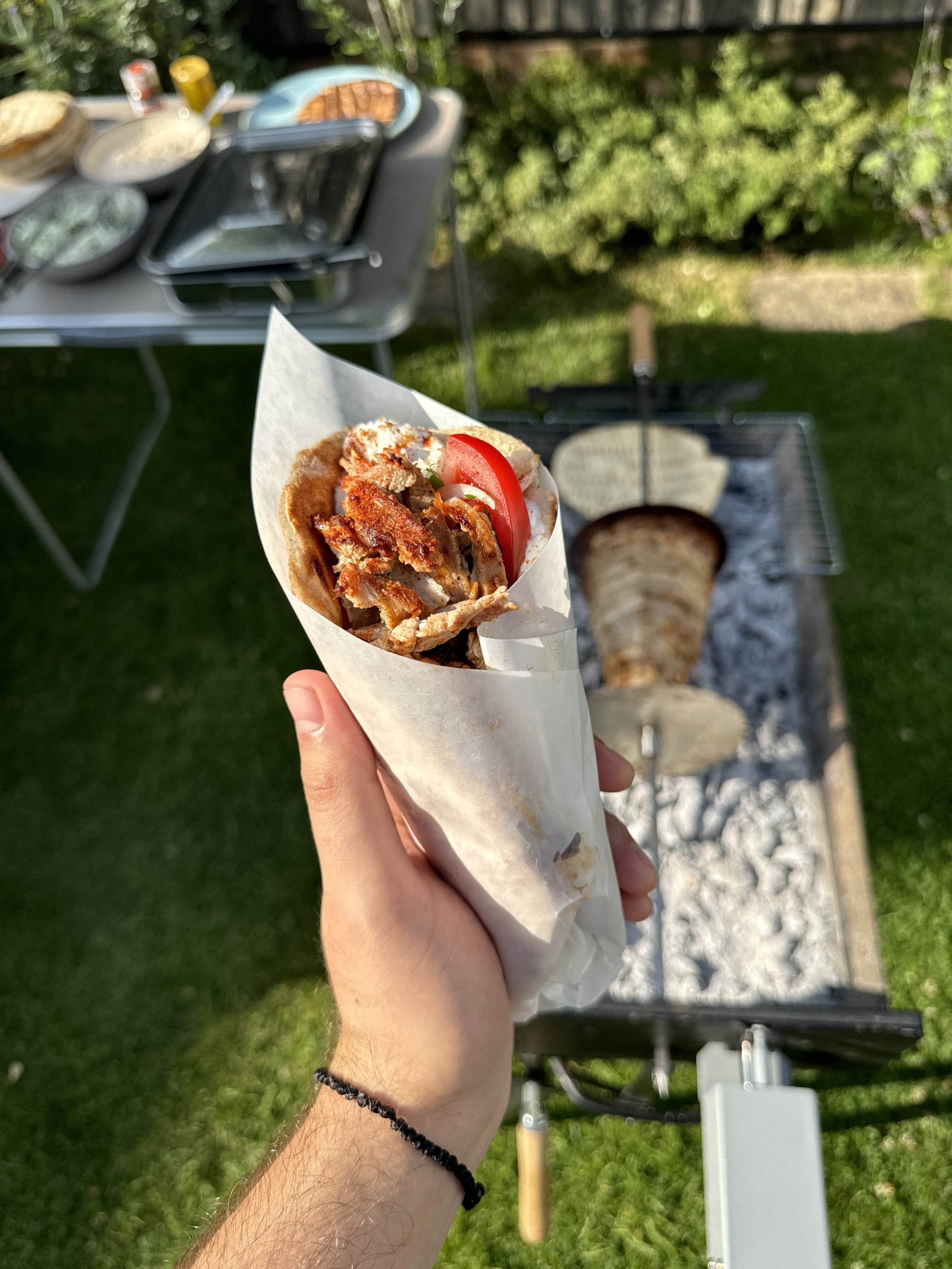
WELCOME TO
The Greek Food Blog
A real, honest and informed adventure through Greek & Cypriot cuisine. Through the lens of a souvlaki addict.
Greek Food Recipes
Merch
souvlakipedia
stories
Why Souvlaki?
Even without exaggerating its role in Greek cuisine, it’s impossible to imagine Greece without its national street food: souvlaki.
Although the word has changed through centuries and carries more than one meaning nowadays, by definition it refers to a pre-historic concept that has been known to Greece since, at least, the Bronze Age.
Some of the earliest detailed evidence for roasted meat on a skewer – both archaeological and literary – points back to Hellas. The archaeological evidence relates to a pre-historic ‘barbecue’ preserved by a volcanic eruption in 17th Century BC Thira (aka Santorini), with some of the first literary clues of skewered meat in the Hellenic world found in Homer’s epics, The Iliad and The Odyssey.
Although Greeks today eat a disproportionately excessive amount of souvlakia - relative to its prevalence in Greek cuisine up until the latter half of the 20th Century - souvlaki is inextricably a part of Greek history, even before we take into account its popularity today.
The reality is that you will struggle to go a day in Greece without reading, hearing, or seeing the word ‘souvlaki’. Greeks stay comically true to the stereotype. You’ll hear it in the streets. You’ll hear it on the radio and see it on TV. You’ll smell the smoke from souvlatzidika as early as morning. You’ll see it at panigiria (religious festivals), at farmers’ markets, and, inevitably, in most Greek restaurants. Souvlaki really is everywhere in Greece.
Surprisingly, and in spite of its ubiquitousness in Greek history - from pre-historic Thira through to street vendors in Byzantium and Constantinople - it only really begins to become as mainstream as it is today after The Second World War. The story of souvlaki as we know it today begins in the first quarter of the 20th Century, when the first souvlatzidiko opens (you can read about it here), laying the foundations for the development of a national street food.
Perhaps even more surprisingly, the descendent of the pre-historic Greek tradition of meat on a skewer only really starts to become a national street food from the 1950s. Gyros comes later, from the late 1960s, when adaptations were made to the Ottoman invention of döner, which Greek refugees from Asia Minor originally took to Greece in the 1920s.
The point still remains: when it comes to souvlakia, we can trace a line from pre-historic Greece to the present day, and catch glimpses of it in between. To suggest that it has always been a part of Greek history in some way is true.
While an excess of meat might not constitute a comprehensive or accurate representation of Greek cuisine, the essence of a good souvlaki does. It is simple, it is natural, it is resourceful and practical. It is meat, with little-to-no alteration, skewered with the tools of a workman, and the reeds found by lakes and rivers. Served with bread and salad.
Above all, it is accessible. Throughout history, it has been enjoyed by soldiers, the aristocracy, and the working class alike.
Souvlakia well and truly are for everyone.
The first literary evidence of souvlaki is found in Homer’s Iliad.
Iliad I, lines 205-217.



















PARTNERS
Proudly supporting independent & family-run businesses who put quality and community first.
Follow Souvlakination on Instagram
Join a community of 70,000+





























Baklava recipe with an original Souvlakination serving suggestion using PAPAFiLiPOU Chios Mastiha ice cream.